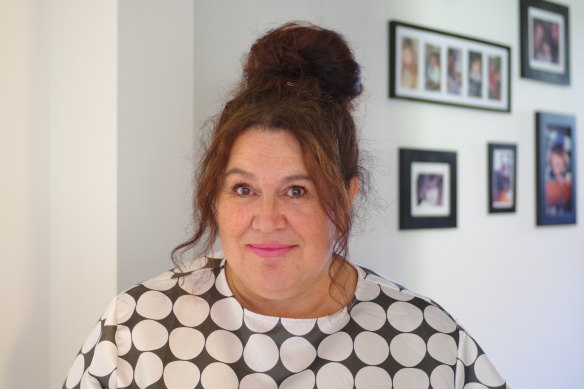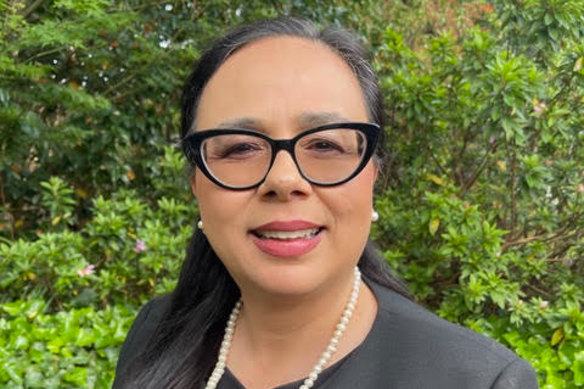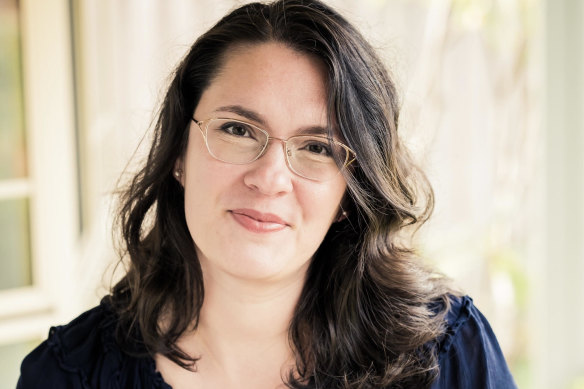This was published 4 months ago
‘I help people depart this world with love’: The women taking the fear out of death
By Dilvin Yasa
In an inner-city suburb teeming with cafes, I can’t deny this one in particular had me intrigued: “Let’s get together, drink tea, eat cake and discuss death!” The ad was for a death cafe, an ever-increasing number of pop-up events created for people to come together to discuss The End (and everything that comes with it).
The prevalence of such occasions isn’t the only change we’re witnessing in the death-and-dying industry. We’re attending coffin clubs to DIY our own creations, and enrolling in end-of-life doula training in large numbers (National End-of-Life Doula Alliance membership grew from 260 in 2019 to 1545 in January 2024). Meanwhile, cemeteries are being transformed into spaces where visitors can grab a coffee or enjoy a picnic.
Interestingly, data shows that it’s women, now entering the industry in significant numbers, leading the change. We speak with three doing exactly that.
“I help people depart this world with love”
Nicole Grundy, end-of-life doula

As a death doula, Nicole Grundy provides support during the final stages of life.
“There are many ways to describe what I do; some call me a death doula, others refer to me as an end-of-life consultant, a death walker, death midwife or a death guide. I prefer doula because it means ‘to serve’ in modern Greek. But unlike traditional doulas, who usher in new life, I’m at the other end of our journey, helping people to depart this world with love and compassion.
I wouldn’t say I was always curious about the industry; I’m a Gen Xer, so I grew up in a time when you were kept well away from the dying process. It was only after I became my parents’ full-time carer around 2018 that I realised I didn’t have the skills to help them when they neared the end. So I started doing research. I was working in PR at the time, but the more I immersed myself in the world of end-of-life care, the more I realised it’s what I wanted to do.
It never ceases to amaze me how much time people take to research holidays or a new car, but give no thought to one of the biggest moments of our lives.
As an end-of-life doula, I provide emotional, physical and spiritual support during those final stages of life, as well as death literacy – practical and tangible resources and education to empower people make the decisions that matter, such as whether they’d prefer to die at home and who they’d like by their side when it happens.
Every patient is different. Some might be emotional and need a compassionate ear while others might want you around to support their grieving family. Some just want information they can’t readily find themselves.
I’m honoured to share the space with all the hearts that engage me, but several stand out. I had one gentleman who unfortunately died before his daughter could get to him, and I was able to have him transferred to a holistic funeral home so she could spend a couple of days with him in what looked like a normal bedroom.
I had another gentleman whose daughter was far too distraught to engage in discussion about his wishes. I worked with him for three days to reach a point where he could pour his heart out in a letter to his family, but also provide clear instruction on what he would like for his funeral. He had everything mapped out, right down the jacket he wanted to wear in his coffin.
I’ve noticed a change in the way Australians view death and dying. We’re having conversations, and even within the industry new courses are being offered, such as a Certificate 4 in End of Life Doula Services. I believe COVID has played a big part in this; it’s made us realise that life is short and can be taken from us at any moment. My hope? That regular dialogue about the process takes the fear and anxiety out of it.”
“It’s opportunity to authentically represent someone’s life”
Evelyn Calauman, living funeral celebrant

Celebrant Evelyn Calauman attends living funerals, where the guest of honour attends the service before they die.
“I’ve had a diverse work background, ranging from flight attendant to operating a tour company, but in 2007 I started thinking about finding a career I could grow old with. The idea of becoming a celebrant sounded ideal.
I love celebrations and public speaking, but it’s also one of those rare careers where the older you are, the more seriously people seem to take you. Most celebrants don’t usually conduct both weddings and funerals, but I was open to all of it.
It wasn’t an easy start; after conducting my 12th funeral, I was asked to resign by the funeral home I was working for as I was crying too much during the service. After some therapy, working on my own unresolved grief issues, I became better at understanding that I am hired to guide the family and be their voice through one of the most difficult times in their lives.
Eventually, I conducted a few weddings in which one of the spouses was diagnosed with a terminal illness, and it was their wish to get married before their death. While one might expect these ceremonies to be sad and confronting, they were deeply moving and filled with heartfelt emotion.
I’ve also been involved in living funerals, which is where the guest of honour has been terminally diagnosed. A living funeral not only presents an opportunity to more authentically represent someone’s life because they’re involved with the planning, it gives loved ones a chance to say goodbye, share memories and communicate their appreciation.
Living funerals can be more confronting than traditional ones. Not only are people dealing with the fact that this person they love is about to die, and that this is probably the last time they’re going to see them, it’s hard to know what to say.
During the funerals I’ve presided over, most attendees learn something new about the deceased, often saying, ‘I wish I’d known that about them.’ So the idea of a living funeral, where the guest of honour shares their stories, can be potentially healing. That said, a number of people who’ve engaged my services for a living funeral have changed their minds at the last minute; usually their illness takes over before the day and they decide they’re too tired or unwell to go through with it.
Some cultures are better than others when it comes to dealing with death and dying, but attitudes are changing. Social media, where people are openly expressing their grief or setting up memorial pages, shows we’re on the right track. My advice? Celebrate all the milestones while you still can and be grateful for every little wonderful thing that comes your way.”
“They feel a sense of peace as soon as they put it on”
Nicoleta Stephens, jeweller

Jeweller Nicoleta Stephens creates personal mementos that can include ashes, hair or breast milk.
“My baby was four months old when I had this sense that I would go crazy if I didn’t find a way to fulfil my innate artistic needs. I’d grown up believing I was going to do something that would change the world, but in 2016 I found myself working as an accountant, which paid the bills but left me feeling I was missing something. Then I came across someone who was making jewellery out of breast milk, and I was intrigued enough to undertake a jewellery-making course.
Once I started making breast-milk jewellery, though, I started to get requests from customers asking if I’d consider making custom pieces out of the cremated remains of their loved ones. Having lost my beloved grandmother, who raised me, I could certainly understand the desire.
That was the moment I realised I’d finally found a way to make a positive impact on people’s lives and I employed a team of stone cutters, jewellers and stone setters in preparation.
There’s a saying that pain is the price we pay for love, and it’s something I see every day. My clients are beautiful people who’ve lost a child, a partner, a parent, or the dream of parenthood. Until recently, mothers who miscarried were usually sent away from hospital with nothing but a form denoting “medical waste”, but now they have the option of cremating their baby’s remains and sending them to me to create a permanent reminder that their baby was here and that they were loved. That’s a huge change.
The process to choose the right piece can be a lengthy one; you want to ensure they’re making the correct decision, which can be hard when someone is grieving. We’ll discuss their lifestyle – whether they work with their hands or not, for example – and this will help dictate whether to go with a ring, a pendant or something else.
Some choose a stone in their loved one’s favourite colour, or perhaps their birth stone. Then they’ll send in the inclusion, whether it be ashes, hair or breast milk, and we go from there. From sapphires to Murano glass, there are plenty of options, but no matter the piece they go with, the feedback is always the same: there are many tears when they unbox it, but they also feel a sense of peace as soon as they put it on.
I have a Romanian folk costume my grandmother gave me that I derive a lot of strength from. When I’m feeling sad or unsure, I run my hands over the fabric and feel the love in every stitch. I draw strength from it, and that’s exactly how my clients feel. To be able to hold their loved one and keep them with them always can help them to heal and, in some cases, even to go on.”
Get the best of Sunday Life magazine delivered to your inbox every Sunday morning. Sign up here for our free newsletter.